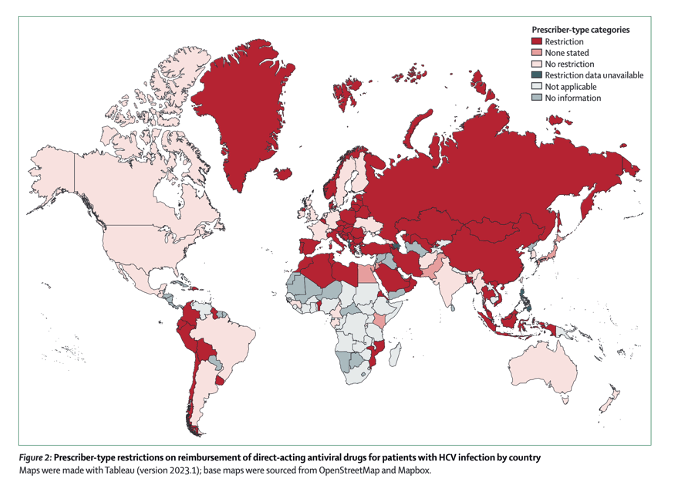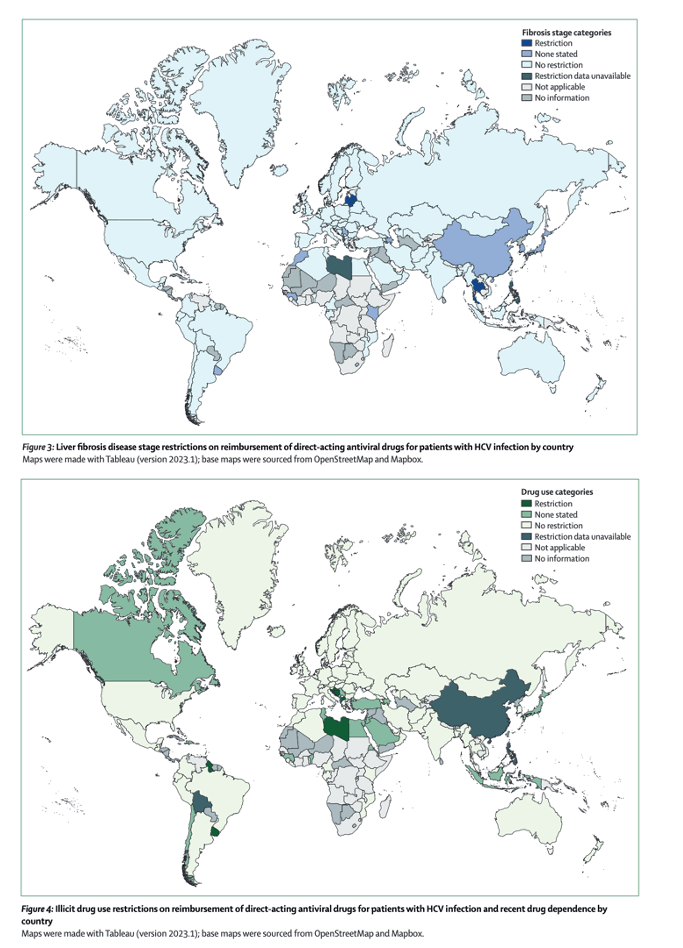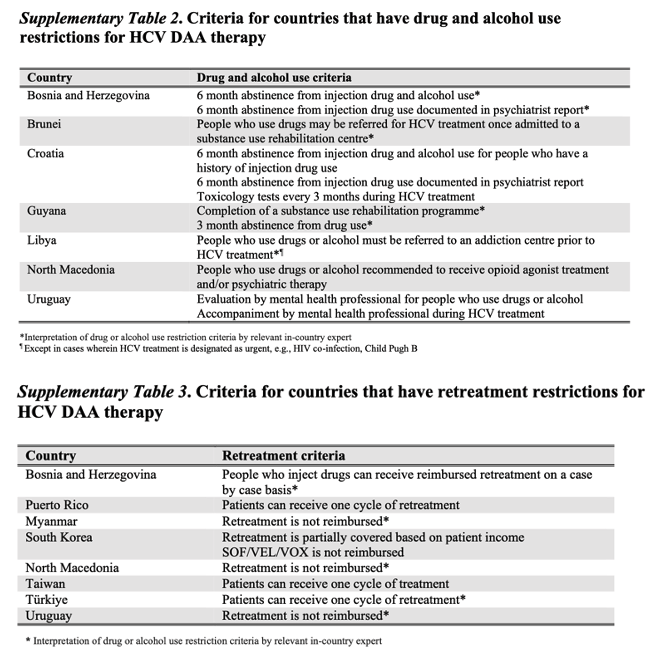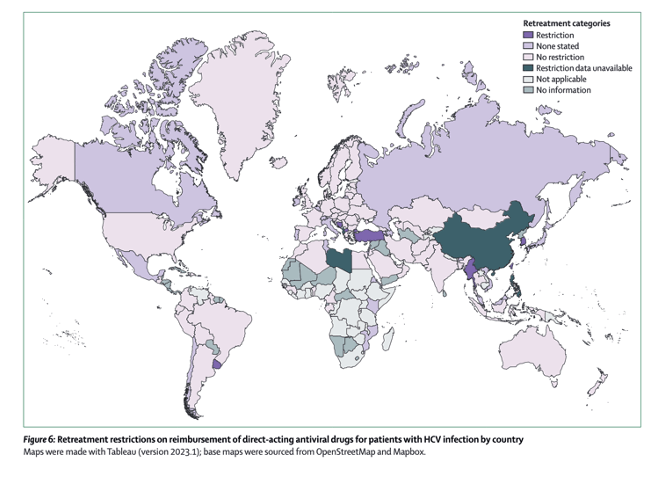| |
Direct-acting antiviral therapies for hepatitis C infection: global registration, reimbursement, and restrictions
|
| |
| |
Download the PDF here
Download the PDF here
Feb 14 2024
on behalf of the Global HCV and HIV Treatment Restrictions Group
Direct-acting antivirals (DAAs) for hepatitis C virus (HCV) infection have delivered high response rates (>95%) and simplified the management of HCV treatment, permitting non-specialists to manage patients without advanced liver disease. We collected and reviewed global data on the registration and reimbursement (government subsidised) of HCV therapies, including restrictions on reimbursement. Primary data collection occurred between Nov 15, 2021, and July 24, 2023, through the assistance of a global network of 166 HCV experts. We retrieved data for 160 (77%) of 209 countries and juristrictions. By mid-2023, 145 (91%) countries had registered at least one of the following DAA therapies: sofosbuvir-velpatasvir, sofosbuvir-velpatasvir-voxilaprevir, glecaprevir-pibrentasvir, sofosbuvir-daclatasvir, or sofosbuvir. 109 (68%) countries reimbursed at least one DAA therapy. Among 102 low-income and middle-income countries (LMICs), 89 (87%) had registered at least one HCV DAA therapy and 53 (52%) reimbursed at least one DAA therapy. Among all countries with DAA therapy reimbursement (n=109), 66 (61%) required specialist prescribing, eight (7%) had retreatment restrictions, seven (6%) had an illicit drug use restriction, five (5%) had an alcohol use restriction, and three (3%) had liver disease restrictions. Global access to DAA reimbursement remains uneven, with LMICs having comparatively low reimbursement compared with high-income countries. To meet WHO goals for HCV elimination, efforts should be made to assist countries, particularly LMICs, to increase access to DAA reimbursement and remove reimbursement restrictions-especially prescriber-type restrictions-to ensure universal access.
The aims of this Health Policy paper were to review the global registration status of HCV DAAs, the reimbursement of DAAs (government reimbursed, subsidised, or fee-free policy), and the presence and type of restrictions (prescriber type, liver disease stage, drug and alcohol use, and retreatment) on DAA reimbursement.
Compared with other infectious diseases, global leadership and financial backing is lacking for HCV.
Few countries are currently on track to meet WHO targets: WHO has set targets to eliminate viral hepatitis as a global public health threat by 2030, including diagnosing at least 90% of people with HCV and treating at least 80% of people diagnosed with HCV.8 The absolute targets set by WHO strive to reduce annual HCV incidence to no more than 5 per 100000 population (≤2 per 100 people who inject drugs) and annual mortality to no more than 2 per 100000 population.
Our data indicate that prescriber restrictions were the most common DAA restriction.
Global access to DAA reimbursement remains uneven, with LMICs having comparatively low reimbursement compared with high-income countries. To meet WHO goals for HCV elimination, efforts should be made to assist countries, particularly LMICs, to increase access to DAA reimbursement and remove reimbursement restrictions-especially prescriber-type restrictions-to ensure universal access.
Among the reviewed restrictions, non-specialist prescribing is an especially key area for improvement. To meet WHO targets, efforts should be made to assist countries to increase access to DAA reimbursement and to ensure universal access by removing reimbursement restrictions.




| |
| |
| |
|
|
|